Bodybuilding
Mr. Olympia: Unique Facts About Each One of Them Since 1965
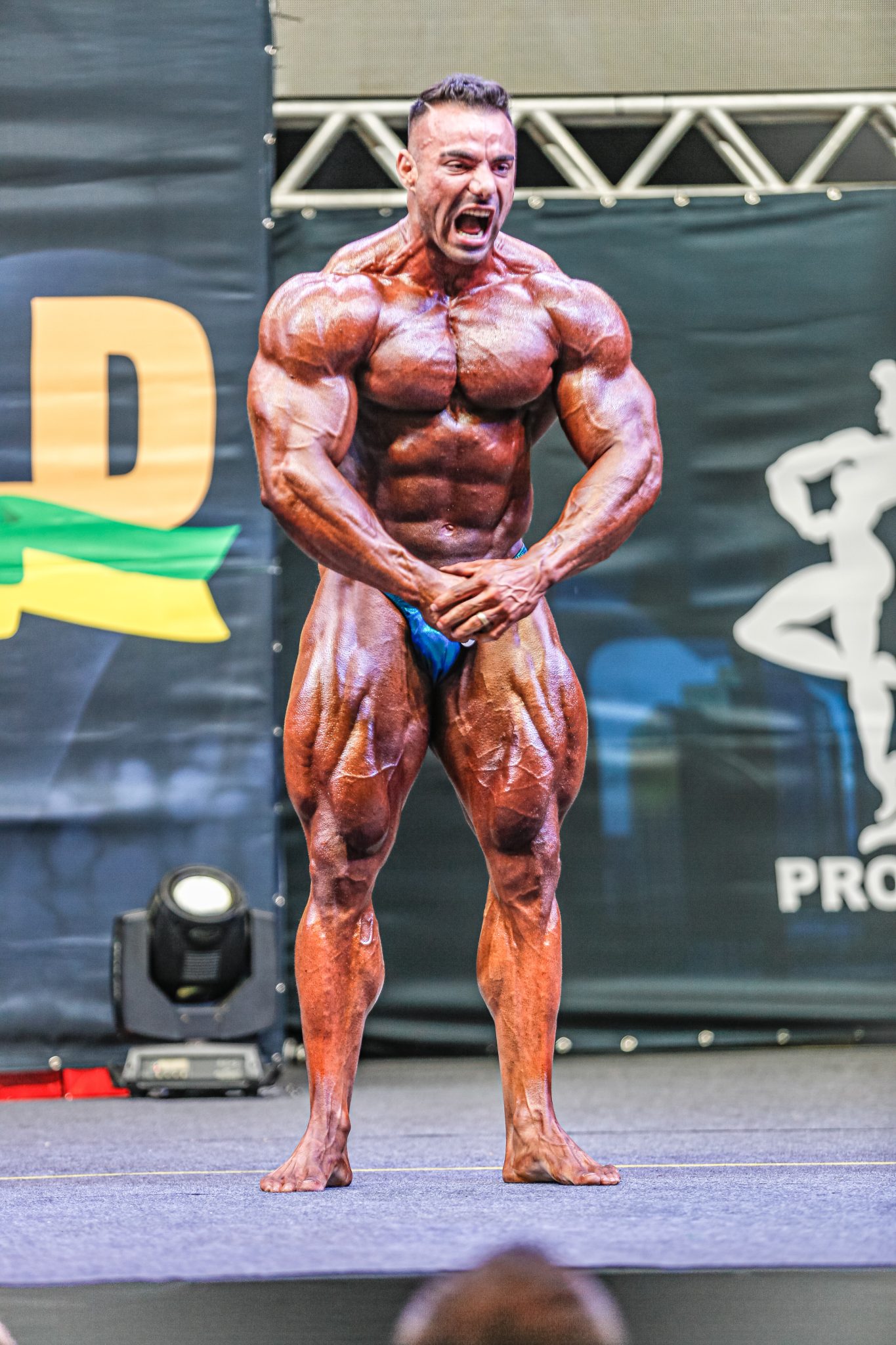
Mr. Olympia, since 1965
Mr. Olympia Is a title awarded to the professional men’s bodybuilding contest winner at Joe Weider’s Olympia Fitness and performance weekend. Weider’s Olympia Fitness and performance weekend is an international bodybuilding competition held annually by the international federation of bodybuilding and fitness. Moreover, the competition was created by Joe Weider to allow Mr. Universe winners to compete and earn money. So many faces have taken home the title Mr. Olympia. The first-ever Mr. Olympia competition was held at the Brooklyn Academy of music, in New York City, on September 18, 1965.
The following are the unique facts about each Mr. Olympia winner since 1965;
Larry Scott (1965-1966)
- Larry Scott was born on October 12, 1938, in Blackfoot, Idaho, USA. He was nicknamed 'the legend or the golden boy.
- Larry Scott was 5 feet and 7 inches.
- He weighed 205lb.
- Larry Scott was the first Mr. Olympia winner and one of the first bodybuilders to make it to mainstream media.
- Also, Larry Scott won eight times at position one in the bodybuilding contests, once at position three, and once at position nine.
- He retired at 28 years of age.
- He died on March 8, 2014, aged 75 years, in Salt Lake City, Utah, USA.
SERGIO OLIVER (1967-1969)
- Sergio Oliver was born July 4, 1941, in Guantanamo, Cuba.
- He was nicknamed “the Myth”.
- Sergio Oliver was 5 feet and 10 inches tall and weighed 255 lbs.
- He won the 1968 Mr. Olympia unopposed and was the first man to beat Arnold Schwarzenegger in Mr. Olympia.
- Notably, he won 19 times as position 1 in the bodybuilding contest, six times in position 2,1-time, 3,2 times in position 4,1-time position 7- and 2 times in position 8.
- Sergio Oliver was the most famous bodybuilder in history because of his head-turning physique.
- Oliver was known for his fantastic waist measurements of 28 inches, arms of 22 inches, and chest of 58 inches.
- Sergio Oliver becomes a movie star in the movie California state governor.
- He died on November 12, 2012, aged 71 years, in Chicago, Illinois, United States of America.
Related Article:: 6 Famous Mr. Olympia of All Time
ARNOLD SCHWARZENEGGER 1970-1975,1980
- Arnold Alois Schwarzenegger was born in Thal, Austria on July 30, 1947.
- He was nicknamed” the Austrian oak”.
- He was six feet and 2 inches tall.
- Arnold Alois weighed 235 lb.
- Arnold Schwarzenegger won Mr. Olympia 1970-1975 and 1980 seven times.
- He retired in 1980 after achieving virtually every dream.
FRANKO COLUMBU 1976,1981
- He was born on August 7, 1941, in Sardinia, Italy.
- He was nicknamed “the Sardinian strongman.”
- Columbu was 5 feet and 5 inches tall and weighed 185 lbs.
- Franko Columbu holds doctorates in chiropractic and nutrition.
- He co-starred in a bodybuilding documentary, pumping iron.
- He was 14 times position 1 in the bodybuilding contest.
- Columbu won the world's strongest man competition in 1977 despite breaking his leg in one of the events and being unable to complete it.
- He retired in 1981 Mr. Olympia.
- He died on August 30, 2019, at age 78, in San Teodoro, Italy.
FRANK ZANE 1977-1979
- FRANK Zane was born on June 28, 1942, in Kingstone, Pennsylvania, USA.
- Zane is aged 79 years.
- Frank Zane is 5 feet and 9 inches tall and weighs 220lb.
- Frank Zane is nicknamed” the chemist” since he knew how to navigate the world of bodybuilding.
- His physic is considered one of the greatest in the history of bodybuilders because of the focus on proportion symmetry.
- Frank Zane had the thinnest waistline out of all the Mr. Olympia winners.
- Frank Zane has a master’s degree in experimental psychology.
- Zane is one of the three people ever to conquer Arnold Schwarzenegger in the competition.
- He won 20 times position 1 in the bodybuilding contest,3 times position2,1 time position 3- and 3 times position 4.
- Frank Zane was incorporated into the IFBB hall of fame in 1999, becoming one of the greatest.
HENRI CHRISTOPHE DICKERSON 1982
- He was born on August 25, 1939, in Montgomery, Alabama, USA.
- He is 81 years old.
- Henri Christophe is 5 feet and 6 inches tall and weighs 190 lbs.
- Henri Christophe was the oldest Mr. Olympia winner at the age of 43.
- He has 30 years of bodybuilding career and is known for having heavy muscles.
- Henri Christophe is the first African-American to be a Mr. America.
- Henri Christophe won 31 times position 1 in the bodybuilding contest, 16 times position 2,4 times position 3, 5 times position 4, one-time position 5, one-time position 6, one-time position 8, and one time position 11.
- Christophe retired in 1994.
SAMIR BANNOUT 1983
- Bannout was born in Beirut, Lebanon.
- His peers call him “the lion of Lebanon.”
- He is 5 feet and 7 inches tall and weighs 196lb.
- Samir has 17 years of professional bodybuilding career.
- Notably, due to his lower-back definition, he was the founder of the term “Christmas tree “to the bodybuilding community.
Also, Samir Bannout won 6 times position 1 in the bodybuilding contest,3 times position 2,2 times position 3,3 times 4,7 times position 5,6 times 6,3 times position 7,3 times position 8,3 times position 9 4 times position 10- and 11-times position 11 plus other positions. He retired in 1996.
Must Read:: Mr. Olympia Contest 2017 Event in Las Vegas
LEE HANEY 1884-1991
- Lee Haney was born on November 11, 1959, in Fairburn, Georgia, USA.
- His nickname is “Total-Lee Awesome.”
- He is 5 feet and 11 inches tall and weighs 255 lb.
- Known as the record holder for most Mr. Olympia wins, he has 8 Mr. Olympia wins.
- Lee Haney has a career of 25 years and is one of the most known bodybuilders.
- Haney was 19 times position 1 in the bodybuilding contests,2 times position2, and 3 times position 3
DORIAN YATES 1992-1997
- Dorian Andrew Mientjez yates was born on APRIL 19,1962 in Solihull, England, and is 59 years of age.
- His nickname is “the shadow.”
- He is 5 feet and 10 inches tall and weighs 250-260 lb, thus becoming one of the heaviest bodybuilders.
- Known for his exercises and back muscles.
- He is the 5th highest number of Mr. Olympia wins in the history of bodybuilding.
- Most people consider Dorian Yates one of the best pro bodybuilders in history.
- He is one of the professional bodybuilders with the most significant size, thus earning his nickname.
- Dorian won 14 times position 1 in the bodybuilding contest two times, position 2- and one-time position 7.
ROONEY COLEMAN 1990-2009
- Rooney Dean Coleman was born on May 13, 1964, in Monroe, Louisiana, USA, and is 57 years of age.
- Coleman's nickname is “the king’.
- Coleman is 5 feet and 11 inches tall and weighs 136lb.
- Rooney Coleman has won the Mr. Olympia title for eight consecutive years.
- He holds the most International Federation of Bodybuilders and Fitness (IFBB).
- Rooney Coleman won 25 times.
- He is one of the professional bodybuilders with the most significant bodies.
In the bodybuilding contest, Rooney Coleman won;15 times position 1, 1-time position2,5 times position 3, 4 times position 4,5 times position 5,7 times position 6, once position 9, once position 11, and once position 11.
JAY CUTLER (2006-2007), (2009-2010)
- Jason Isaac Cutler was born on August 3, 1973, in Sterling, Massachusetts, USA.
- He is 48 years of age.
- He is 5 feet and 10 inches tall and weighs 260lb.
- Jay Cutler is a four-time Mr. Olympia winner.
DEXTER JACKSON (2008)
- Dexter Jackson was born in Jacksonville, Florida, on November 25, 1969.
- Jackson is 51 years of age.
- His nickname is “the blade DJ”.
- He is 5 feet and 6 inches tall and weighs 215 lbs.
- Dexter has made a record-setting of 20 Mr. Olympia appearances.
- Jackson Dexter is the only bodybuilder to have won the title of Mr. Olympia and Masters Olympia competitions.
- He is the fifth oldest bodybuilder to win an international federation for bodybuilding and fitness show at the age of 49.
PHIL HEATH (2011-2017)
- Philip Jerrod Heath was born on December 18, 1979, in Seattle, Washington, USA.
- He is 41 years of age.
- His nickname the “the gift” or” the next big thing.”
- Philip Heath is 5 feet and 9 inches tall and weighs 240lb.
- He is a seven-time Mr. Olympia winner as position 1,2 times position 2, Mr. Olympia, two times position 3, Mr. Olympia, and once position 5.
SHAWN RHODEN 2018
- Shawn Rhoden was born in Kingston, Jamaica, on April 2, 1975.
- Rhoden is 46 years of age.
- His nickname was “the Jamaican muscle machine”.
- Shawn is 5 feet and 10 inches tall and weighs 245 lbs.
- Known to be the oldest bodybuilder ever to have won the Mr. Olympia title at 43.
BRANDON CURRY 2019
- Brandon Curry was born on October 19, 1982, in Nashville, Tennessee, USA.
- His nickname was “the prodigy” or “beefcake”.
- Brandon curry is 38 years old.
- Brandon is 5 feet and 8 inches tall and weighs 255lb.
MAMDOUH ELSSBIAY 2020
- Mamdouh Mohammed Hassan Elssbiay was born on September 16,1984at Kafr El Sheikh, Egypt.
- His nickname is “the big Ramy”.
- He is 5 feet and 9 inches tall and weighs 295 lb.
- Mamdouh Elssbiay is the reigning and defending champion gorm r Olympia as of 2020.
Conclusion
Different bodybuilders have different unique factors. These factors range from their physical appearance of the body and the titles they have won. However, bodybuilding training is a factor that boosts muscle growth, and without it, even having the best diet, muscles will not grow. Everyone nowadays goes to the gym to keep their body fit, including women.
Bodybuilding
Mastering Bodybuilding in 2025: Top Fitness Tips for Success

Bodybuilding is more than just a sport; it's a lifestyle that requires dedication, discipline, and a thorough understanding of fitness principles. As the world of fitness continues to evolve, bodybuilders must stay updated with the latest trends, techniques, and scientific advancements to achieve their goals. In 2025, several innovative approaches are redefining bodybuilding. Here are essential fitness tips for bodybuilders to excel this year.
Read More: Bodybuilder Winter Clothing: Staying Warm and Stylish
Embrace Technology-Driven Workouts
In 2025, technology plays a significant role in bodybuilding. Wearable devices, fitness apps, and virtual reality (VR) training are now integral components of an effective workout regimen.
Wearable Devices
Modern wearables track everything from heart rate and sleep patterns to muscle activation and caloric expenditure. Utilize these devices to monitor your progress and make data-driven adjustments to your training and nutrition plans.
Fitness Apps
Leverage fitness apps for customized workout plans, progress tracking, and virtual coaching. Many apps now incorporate artificial intelligence to provide personalized feedback and recommendations.
Virtual Reality Training
VR technology offers immersive workout experiences, allowing bodybuilders to simulate different training environments and scenarios. This can enhance motivation and add variety to your routine.
Focus on Functional Strength
While hypertrophy (muscle growth) remains a primary goal, functional strength is gaining importance. Functional strength training improves overall performance, reduces the risk of injury, and enhances daily activities.
 Check Out Our1 4 Weeks Quality Strength & Lean Muscles
Check Out Our1 4 Weeks Quality Strength & Lean Muscles
Compound Movements
Incorporate compound exercises like squats, deadlifts, and bench presses. These movements engage multiple muscle groups and joints, promoting balanced strength development.
Core Stability
Prioritize exercises that strengthen the core, such as planks, Russian twists, and leg raises. A strong core supports better lifting mechanics and reduces the risk of lower back injuries.
Optimize Nutrition for Muscle Growth and Recovery
Nutrition is the cornerstone of successful bodybuilding. In 2025, the focus is on personalized nutrition plans tailored to individual needs and goals.
Protein Intake
Ensure adequate protein intake to support muscle repair and growth. Aim for 1.6 to 2.2 grams of protein per kilogram of body weight per day, depending on your training intensity and goals.
 Click Here to Buy SynthaTrope By SynthaPharma
Click Here to Buy SynthaTrope By SynthaPharma
Nutrient Timing
Pay attention to nutrient timing to maximize muscle recovery and growth. Consume protein and carbohydrates within 30 minutes post-workout to replenish glycogen stores and kickstart muscle repair.
Supplements
Utilize supplements wisely. Creatine, branched-chain amino acids (BCAAs), and omega-3 fatty acids are popular choices for enhancing performance and recovery.
Prioritize Mental Health and Mindfulness
Mental health is increasingly recognized as a critical component of overall fitness. Incorporating mindfulness practices can improve focus, reduce stress, and enhance performance.
Meditation
Incorporate meditation into your daily routine to reduce stress and improve mental clarity. Mindfulness meditation can enhance your mind-muscle connection during workouts.
Visualization
Use visualization techniques to mentally rehearse your workouts. Visualizing successful lifts and achieving your goals can boost confidence and motivation.
Rest and Recovery
Prioritize rest and recovery to prevent burnout and overtraining. Ensure you get 7-9 hours of sleep per night and incorporate rest days into your training schedule.
Leverage Advanced Training Techniques
Advanced training techniques can help break through plateaus and stimulate muscle growth. In 2025, several methods are gaining popularity among bodybuilders.
Blood Flow Restriction (BFR) Training: BFR involves restricting blood flow to the muscles during low-intensity exercises. This technique can enhance muscle growth and strength without the need for heavy weights.
Eccentric Training: Focus on the eccentric (lowering) phase of exercises. Eccentric training can stimulate greater muscle damage and growth compared to traditional concentric movements.
Periodization: Implement periodization into your training plan. Varying the intensity, volume, and type of exercises can prevent plateaus and ensure continuous progress.
Incorporate Recovery and Mobility Work
Recovery and mobility are essential for preventing injuries and maintaining optimal performance. In 2025, bodybuilders are paying more attention to these aspects of training.
Foam Rolling and Myofascial Release: Use foam rollers and massage balls to release muscle tightness and improve flexibility. Regular myofascial release can reduce soreness and enhance recovery.
Stretching: Incorporate dynamic stretching before workouts and static stretching after workouts. Stretching improves range of motion and prevents muscle imbalances.
Cryotherapy and Hydrotherapy: Explore recovery techniques like cryotherapy (cold therapy) and hydrotherapy (water therapy) to reduce inflammation and accelerate muscle recovery.
Engage in Continuous Learning and Community Building
The fitness industry is constantly evolving, and staying informed is crucial for success. Engage in continuous learning and connect with the bodybuilding community for support and motivation.
Educational Resources: Read books, watch videos, and attend seminars to stay updated on the latest research and trends in bodybuilding.
Community Engagement: Join online forums, social media groups, and local bodybuilding clubs. Sharing experiences and knowledge with fellow bodybuilders can provide valuable insights and encouragement.
Professional Guidance: Consider working with a certified personal trainer or coach. Professional guidance can help you optimize your training and nutrition plans, ensuring you're on the right track.
With your FB Plus subscription or active FB Plus Pass, you now have access to 124 weeks of our most popular workout programs, which typically sell for $10-$30 each. Additionally, our popular 4-week Meal Plan is included. This is on top of the 38 Challenges and Programs that are already available to Plus members.
We've also introduced a new feature that many of you have requested. To assist you in choosing your next program, you can now preview each day of any program from its detail view. This feature lets you see all the included workout videos and content before you schedule it, ensuring you know exactly what to expect.
Conclusion
In 2025, bodybuilding is more than just lifting weights; it's a holistic approach to fitness that encompasses technology, nutrition, mental health, and advanced training techniques. By embracing these fitness tips, bodybuilders can achieve their goals, stay injury-free, and enjoy a fulfilling fitness journey. Remember, consistency and dedication are key to success in bodybuilding. Stay committed, keep learning, and most importantly, have fun on your path to becoming the best version of yourself.
Bodybuilding
Top Video Games for Bodybuilders in 2025

There are several video games that can be great for bodybuilders, combining fitness and fun! Here are some of the best options:
Ring Fit Adventure (Nintendo Switch)
The game uses the Ring-Con and Leg Strap to guide you through various exercises and adventures. It's a fun way to get a full-body workout while playing a game.
Fitness Boxing 2: VR Boxing Remastered (PlayStation VR)
It offers a full-body boxing workout with a variety of punches and combos. It's a great way to improve your fitness while enjoying a virtual boxing experience.
Must Read: Marvel-Inspired Training Clothing on Amazon
Just Dance 2024
This popular dance game gets you moving to the beat with a variety of songs and dance routines. It's a fun way to burn calories and improve your coordination.
Zumba Fitness
Burn It Off (Nintendo Wii): This game offers a fun and energetic Zumba workout, perfect for those who enjoy dancing and want to get a good cardio workout.
Yoga for Beginners
If you're looking for a more relaxing workout, yoga games can help improve flexibility and reduce stress. Many of these games offer guided yoga sessions that you can follow along with.
Gym Tycoon
This game lets you build and manage your own gym, complete with various workout equipment and fitness classes. It's a great way to learn about different exercises and how to create effective workout routines.
The Sims 4: Fitness Stuff Pack
This expansion pack for The Sims 4 adds fitness equipment and activities to the game, allowing you to improve your character's fitness and join the athlete career.
Grand Theft Auto: San Andreas
While not a traditional fitness game, this classic game includes bodybuilding activities that can help your character gain muscle and improve fitness.
Knockout Home Fitness (Nintendo Switch)
This game offers a variety of boxing workouts that can help improve your strength and endurance.
Gym Simulator 24 (PC)
In this simulation game, you can build and manage your own fitness empire, creating workout routines and managing gym equipment.
Let's Get Fit (Nintendo Switch)
This game focuses on pure workouts, allowing you to set programs and follow along with digital trainers for a customized fitness experience.
Beat Saber (VR)
A popular VR game where you slash blocks to the beat of the music, providing an intense full-body workout.
Synth Riders (PlayStation VR)
This game combines freestyle dance and fitness, offering high-tempo tracks and multiplayer modes for a fun and energetic workout.
Yoga Master (PlayStation)
Designed by professional yoga coaches, this game offers a variety of yoga lessons and poses to improve flexibility and reduce stress.
Les Mills Bodycombat (PlayStation VR)
A martial arts-inspired workout game with a range of workout plans and coaching to keep you motivated.
OhShape Ultimate (PlayStation VR)
This game provides a full-body cardio workout with six sessions and two difficulty levels, designed to engage every part of your body.
These games offer a mix of cardio, strength, and flexibility workouts, making them great additions to your fitness routine.
Related Article: Supplemental Breast Milk for Bodybuilders
Bodybuilding
2nd Edition of Natural Bodybuilding Competition Facts

Natural bodybuilding competitions are designed to promote and celebrate athletes who build their physiques without the use of performance-enhancing drugs. These events emphasize fair play, health, and the natural development of muscle mass and definition.
The second edition of natural bodybuilding competitions has gained momentum globally, particularly focusing on drug-free athletes. These competitions are hosted by various organizations like the INBA/PNBA (International Natural Bodybuilding Association/Professional Natural Bodybuilding Association) and OCB (Organization of Competitive Bodybuilders).
In 2024, several notable events have been planned, including the INBA Natural Universe and INBA World Cup, both of which emphasize natural bodybuilding through rigorous drug testing policies. These events aim to showcase competitors who adhere to strict drug-free protocols, and winners often earn pro cards allowing them to compete in higher-level professional competitions.
These competitions focus on categories like men's bodybuilding, classic physique, and women's figure and bikini, among others. Athletes undergo polygraph and urine tests to ensure compliance with natural bodybuilding standards. The winners often receive medals, trophies, or pro status
-

 Steroids2 years ago
Steroids2 years agoVOX Testing: Why Bodybuilders Must Have It Tested Regularly
-

 Steroids2 years ago
Steroids2 years agoShavers and Other Body Grooming Equipment for Bodybuilders In 2023
-

 Steroids2 years ago
Steroids2 years agoChatGPT and Other Avenues to Find Great Bodybuilding Coaches
-

 Steroids2 years ago
Steroids2 years agoBest Oil Recommendations Before Competition for Subtle Shimmer
-

 Steroids2 years ago
Steroids2 years agoPowerlifting Vs Power Building: Find Out the Big Difference and When to Shift Between the Two
-

 Nutrition1 year ago
Nutrition1 year agoEverything Nutritional Food: What’s Too Much Or Too Little
-

 Anabolic Steroids1 year ago
Anabolic Steroids1 year agoLegality of Anabolic Steroids In Latin America
-

 Bodybuilding Products12 months ago
Bodybuilding Products12 months agoTelmisartan In Bodybuilding: An Expert’s Advice
-

 Beginners2 years ago
Beginners2 years agoTren Cycle for Beginners
-

 Bodybuilding1 year ago
Bodybuilding1 year agoList of FDA-Approved Peptides
-

 Bodybuilding2 years ago
Bodybuilding2 years agoCompetition Prep Cycle for Pro Bodybuilders
-

 Bodybuilding1 year ago
Bodybuilding1 year agoChia Seeds in A Bodybuilder’s Diet: An Expert’s Advice
-

 Anabolic Steroids11 months ago
Anabolic Steroids11 months agoHow Much Do You Know About B-AET? A Fat Burner You’ve Been Missing
-

 Steroids11 months ago
Steroids11 months agoAnadrol Cycle: Benefits, Doses, Alternatives, etc.
-

 Bodybuilding7 months ago
Bodybuilding7 months agoPrimal Movements: Our Ultimate Guide for Maximum Results
-

 Anabolic Steroids8 months ago
Anabolic Steroids8 months agoJoint Stiffness: How to Manage It While on AAS
-

 Product Reviews10 months ago
Product Reviews10 months agoTop Vitamins for Skin Health
-

 Steroids9 months ago
Steroids9 months agoOmnitope (Oxytocin)
-

 Bodybuilding1 year ago
Bodybuilding1 year agoHow Much Is Too Much Cardio? Understanding Heart Rate Zones
-

 Bodybuilding8 months ago
Bodybuilding8 months agoHow Effective is Bone Broth for Recovery?
-

 Steroids10 months ago
Steroids10 months agoMajor Bodybuilding Peptides Explained
-

 Bodybuilding9 months ago
Bodybuilding9 months agoHormone Replacement Therapy (TRT) Cycle Guide
-

 Anabolic Steroids1 year ago
Anabolic Steroids1 year agoStart The New Year Strong With These Tips
-

 Steroids8 months ago
Steroids8 months agoSleeping Positions for Effective Muscle Recovery
-

 Steroids1 year ago
Steroids1 year agoTrenbolone: Why it Remains A Beast In the Market



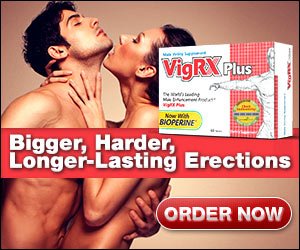
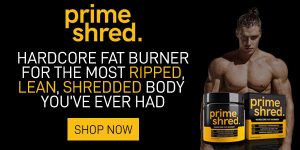

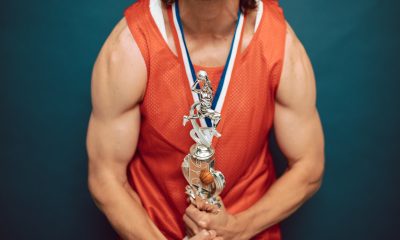

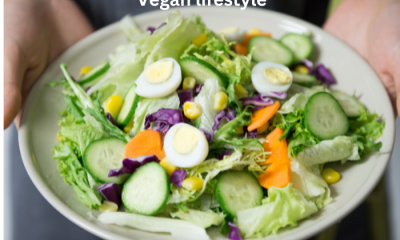





 Click here to buy 1-Test Cyp/DHB 100 by Dragon Pharma
Click here to buy 1-Test Cyp/DHB 100 by Dragon Pharma









